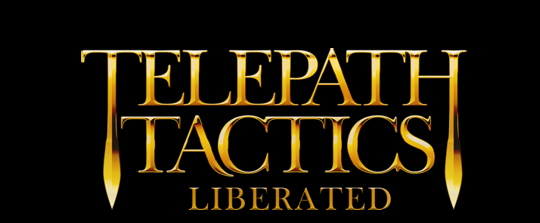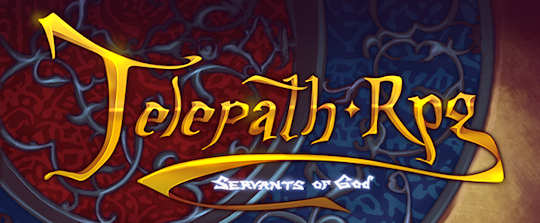I’ve been making video games since 2006; my last video game, Telepath Tactics, came out in 2015. It took me 5 years to create, and by the end, I was exhausted and in need of something quicker and easier–so I took a board game I’d been working on since 2003, then gave myself a year or so to polish the design, get it some stellar art, then release it. That was True Messiah.
Today, I have experience commercially publishing games as an indie game developer in both the video game space and the board game space. Having had my foot in both worlds, I’m now prepared to look back and pronounce judgment.
The diplomatic version: both video games and board games have different things going for them, and they’re both valid art forms. The cut-the-bullshit version: if you’re a video game developer tempted to try out making board games, don’t.
Board games have some big advantages over video games
I’ll start with the things that, taken from a developer’s perspective, board games have going for them vis-a-vis video games.
There’s just one single, really gigantic thing, actually: they don’t require programming or animations. This fact, standing alone, makes them dramatically faster and easier to make than even the simplest video game.
Consider: programming AI for a video game is long, slow, tricky work. But in a board game, you rely on the players (or sometimes a deck of cards) to be your off-the-shelf AI. Programming a video game’s mechanics means writing out the logic of your rules in excruciating detail as well as hand-writing the logic governing how an agent may intelligently navigate them; this can take months to accomplish. For a board game, all you need is a rule book that explains the rules, maybe with a few clarifying illustrations, and a few players willing to figure out the logical interactions of those rules. Again, the players’ brains do all the work you used to have to do by hand. It’s like magic!
Say goodbye to programming user interfaces, too. In a board game, it’s all physical objects that the players manipulate with their hands–as long as the information on those objects is clear and easy to read, you’re set! And all those long, brutal months you spent hunting down and fixing bugs? Ha! Yeah, forget that. If your rules need tweaking or clarification post-release, maybe you spend, like, a few hours maximum editing your rulebook, and then you release a free PDF as a new edition. Done.
It’s not just the programming: it’s the assets, too. Right off the bat, you can toss out any and all expenses related to music or sounds. The only asset-related expense you have is art, and really high quality, top-shelf art for a board game is roughly the equivalent of what you’d spend on just the concept art for a video game. This is because, just as with concept art, you’re only paying for a static digital drawing or painting. The really expensive art requirements–modeling, texturing, rigging, and most of all, animating–just don’t come into the picture. Even if you opt for miniatures, you’re still looking at paying for what are effectively 3D models without textures, rigging, animations, or even much in the way of poly limits. It’s like a dream!
Mechanically, True Messiah is every bit as rich a game as Telepath Tactics, but it took a fraction of the time to develop into a functioning product–and even when you account for True Messiah’s much more sophisticated art style, its assets were still only a fraction of the cost!
You save money in other areas, too: engine licensing, server infrastructure, etc. The cost to develop a board game is just absurdly low compared to a video game, both in terms of time and in terms of money.
Oh, and guess what? A copy of any given board game will sell for way more money than a copy of a video game would! Would you spend $50 for an indie strategy game in the video game space? Of course not! What am I, Ubisoft? But wait–make that an indie strategy board game, one with a few nice miniatures that’s an order of magnitude faster and cheaper to design, and suddenly $50 a copy sounds downright reasonable.
“Okay, Craig,” you say. “You’re making it sound like board games are a friggin’ paradise compared to video games. What could possibly make you want to abandon that arena and come back to video game land?” Ha! Ha ha. Oh, my sweet summer child. I hope you have a few minutes…
6. The part of the market you can reasonably reach is tiny, and the rules of engagement are extremely hostile to small developers
Board games are sold absolutely everywhere, and certain independent board game developers have recently been striking it rich in highly visible fashion. What’s more, Gen Con, the premier consumer-facing event for board games, pulled in more than 61,000 attendees its last few years before the pandemic. Board games must be a large market, right?
Nope! Not for an indie developer, they’re not! Board games were left behind by the indie revolution that rocked video games starting back in 2008: being indie in the board game space is still rough.
For one thing, there is no such thing as “Steam for board games”–Kickstarter is as close as it gets. However, Kickstarter isn’t really a proper Steam replacement, since it only serves up time-limited campaigns. Worse, most major board games publishers also use Kickstarter even though they clearly don’t need it. In this way, they’ve conditioned the board games community to view Kickstarter campaigns exclusively as pre-ordering opportunities rather than as a way to help bring unique, quirky games to life. As such, you can expect them to directly compare your component and price offerings to those of major publishers, find yours wanting, and leave.
At first, Blackbox made noises like they were going to step into that “Steam for board games” role, but they’ve since restricted their service exclusively to developers who ship 1,000 or more copies per Kickstarter–which, frankly, is a bit more like “Steam for board games…except small developers can piss off.”
Then there is TheGameCrafter, but that site has a couple of big limitations. First, it’s built around a print-on-demand model–we’ll talk about the consequences of that in more detail in the next section, but for now, suffice it to say that you can’t price your game competitively and simultaneously make enough profit to order a print run that lets you move outside selling through TGC. What’s more, TGC only sells games produced through TCG. In effect: if you produce your game through there, you’re locked in to a low-volume, low-margin business–and if you don’t, you’re locked out entirely.
Other than the above, your option for selling your game remains brick-and-mortar retail shops. Retail, however, remains dominated by large publishing houses, even moreso than Kickstarter.
“All right, all right,” you say. “So if we can’t beat the big publishing houses, why not join ’em?” Unfortunately, board game publishers mostly want nothing to do with you–unless they do, which is almost worse. You see, board game publishers treat board game designers in a way that may strike indie video game developers as…”old-fashioned,” shall we say. Board game publishers will happily wrench creative control away from you, change your game’s rules, and re-theme your game according to their own whims to make the thing more marketable, then reward you with a piffling 5% share of your own game’s sales post-release. Devolver Digital, this ain’t.
So okay–maybe we avoid publishing our board game. Beyond Kickstarter, if you’re indie and you want to get your board game in front of consumers, you have only two real options: pay for a booth at a convention, or convince a distributor to wheedle a spot for your game on the shelves of various retail stores. Neither one of these options offers anything even close to the reach of Steam-style digital distribution, however, and the convention option will cost you a lot of money.
Just as bad, both are time-limited affairs. Cons last for only a few days, and shelf space in stores is at a premium. With retail in particular, if your game stops selling–or doesn’t sell in the first place–that means your product is nothing more than dead weight eating up valuable shelf space, and the retailer in question will ship it back to the distributor. The distributors have limited space in their warehouses, too, so you can expect those unsold games to eventually get shipped back to you…at your own expense.
The bottom line: due to your limited marketing reach as an indie, you’re going to struggle to sell all of your copies. The difficulty of selling off your print run turns out to be a particularly severe problem because…
5. Volume pricing makes you produce more than you need
As digital products, copies of video games have the distinct advantage of only coming into being at the moment of purchase. Board games are physical objects, which means that you need a factory to produce them in advance. Setting up a factory’s print run means incurring certain unavoidable overhead costs up-front, such as setting up the factory dies to cut all of the game’s various cardboard pieces to the correct shapes and dimensions, setting up molds for injection-molded miniatures, and so on. The more copies of a game you opt to manufacture during a print run, the more copies those set-up costs get spread across, and the cheaper each copy ultimately becomes to produce.
The volume at which games become reasonably economical to manufacture is generally in the neighborhood of 1,500 to 2,000 copies. (Unless you have plastic injection-molded miniatures, in which case that number can be way higher.)
Compare this with the number of copies backers snatch up during a moderately successful Kickstarter campaign, and it quickly becomes clear that even if you “succeed,” unless you get lucky, you’re going to end up stuck with many hundreds of excess copies left sitting around, draining you on a monthly basis with storage costs.
Don’t believe me?
- Here is Phoenix Covenant, a strategy board game that had a pretty successful Kickstarter with over $39,000 raised. Do you know how many people actually backed the game at a “get-the-game” level? 244. If these guys don’t get a ton of copies into retail stores, they’re going to be stuck with 1,000+ Phoenix Covenant boxes just sitting around their apartments, gathering dust (or in a rented storage space, sucking up money) while they try to sell them off at conventions year after year.
- Here is DrunkQuest, a board game that pulled in a quite-respectable $85,000 or so. Guess how many backers it had? If you said 592, you guessed right. They definitely had to order a print run sticking them with at least 408 copies after the Kickstarter, though there’s an excellent chance that they ended up with closer to 1,000. If those don’t sell, they’re gonna have a whole lot of boxes to store.
- Here is Battalia: The Creation, a strategy board game that raised nearly $105,000. These guys didn’t bother with tiers that wouldn’t get you the game, but even so, they still only managed to hawk 1,387 copies. This would be quite good, except that their game has a bunch of miniatures, so either their production costs on each copy were really high relative to the price they charged, or they ordered a print run much larger than 1,500 copies. If the former, they won’t be able to afford a second print run without another Kickstarter campaign; if the latter, they got stuck with hundreds (or, indeed, thousands) of copies left over from their initial print run.
Getting the picture? You have to produce a lot of copies of your game to get the necessary volume to produce each copy at a low enough cost that you can price each copy attractively–but this, in turn, means taking on a lot of risk, since there’s no guarantee that you can actually sell anywhere close to that many copies of your game. Every copy you don’t sell is a copy you have to find some way to store. Getting all those copies into retail stores and sold is hard, so you really want to get rid of as many copies via Kickstarter as humanly possible. Unfortunately, this is itself pretty tough to do, because…
4. You can’t really market your game early
Even when your art is finished and you can produce print prototypes, don’t think that you’re going to be able to build a drumbeat of coverage leading up to your Kickstarter campaign–that ain’t how things work in Boardgameland.
For one thing, most outlets simply don’t do regular news posts about board games unless they’re dealing with a major publisher. And covering an indie game before it’s already on Kickstarter? If your game looks amazing, you might manage to get mentioned in a round-up on BoardGameGeek.com alongside dozens of other titles.
Because board game news barely even exists for indies, sending out press releases is primarily an exercise in figuring out which outlets will opt to eventually receive a review copy. It’s widely accepted among board game developers that your board game Kickstarter will fail if you don’t launch it with a review or two already on the page, so this is actually pretty important. However, getting reviews is a whole ‘nother headache.
Consider: you’re dealing with physical goods here, not digital. Therefore, every single outlet you send a review copy to means printing up a prototype and shipping it to them. Both parts of this–printing and shipping–are expensive. Unlike your (hopefully) finished product, these prototypes aren’t going to be part of a print run, and so you won’t have any volume discount to defray costs here.
Moreover, with few exceptions, outlets that you send a game to will not send your copy back to you afterward. Thus, every outlet you submit to means losing a not-insignificant sum of money; and quite a few of them, having received your prototype, simply won’t bother to actually follow through and do a review.
The upshot of this is, you’re essentially limited to sending out copies to outlets that agreed to review the thing in advance, hoping against hope that they actually do what they promised. This is especially rough because, across-the-board, the largest board game review outlets outright refuse to review board games before their Kickstarters have ended, they’ve been manufactured, and they are on sale. There is no way to line up reviews with the potential to drive significant amounts of traffic to your Kickstarter until long after you’ve taken on extraordinary amounts of financial risk.
As an indie board game developer, your only options for getting reviews before the conclusion of your Kickstarter are (1) spending money hand-over-fist manufacturing prototypes and sending them to small blogs with limited readership who will almost certainly drive very little traffic to your campaign page even if their reviews turn out to be positive; and (2) spending money submitting to one of a few outlets with some actual viewership, who will then turn around and charge you several hundred dollars more simply for covering your game.
Which leads me to yet another basket of worms…
3. It’s super cut-throat
Remember when it came out that Indie Game Mag was asking developers for a review fee? Oh man–that was a real scandal in the world of video games! Developers were upset. Former IGM editor Chris Priestman was upset. John Walker of RockPaperShotgun came out and publicly condemned the site. For days, Indie Dev Twitter was a maelstrom of gnashing teeth. As a site that covers video games, charging developers is simply not something you can do without drawing a firestorm of negative publicity down upon your head.
But board games? Ha ha ha! Yeahhhh. See, in video games, maintaining a gaming news or reviews site on ad revenue is tough, but the audience is big enough that it’s at least possible. In board games, however, the market is so small that very few outlets for news and reviews can even sustain themselves without asking for financial support directly from developers.
When I first started marketing True Messiah, I sent out a few rounds of press releases announcing the game and encouraging various board game sites to write about it–pretty standard procedure in the video game world. However, the responses I received were decidedly not standard. I was genuinely shocked at how many times I received responses asking me to spend money in exchange for coverage. These actual responses were fairly typical:
To be clear, this isn’t even a secret: board game Youtubers openly tweet about it, then justify it by saying that they only make previews which are openly paid ads.
It’s not just the news and reviews sites, either. Here is an actual thing from the exhibitor info form for BGG.CON (BoardGameGeek’s official convention) in 2016:

Yeah, you read that right–you couldn’t pay BoardGameGeek $800 to be an exhibitor at their official convention unless you also already paid them $3,000 or more during the prior year for ads! Keep in mind, this is for a convention that sports a turn-out of about 2,500 people total (PAX, by comparison, regularly draws upwards of 70,000 attendees). Needless to say, I didn’t bother looking into it again for 2017 or 2018.
The sad thing is, BoardGameGeek has a near-monopoly on the world of board games–if they have to resort to extorting board game developers in order to make ends meet, what does that tell you about the financial realities of all the smaller board game sites?
As an indie developer with limited options for getting the word out, you’re going to be the prime target for this waterfall of graft. While there has been a growing backlash to the practice of requiring developers to pay money for coverage in the board game community, stupidly, said backlash appears to be primarily directed at the very developers who are victimized by this practice. So you can expect to get screwed by the outlets–and if the players find out, prepare for them to attack not the sites who charged you, but you for having the temerity to try to get the word out about your game.
And that brings me to our next issue…
2. Everyone is looking for reasons to hate your game
Among developers in the video game space, it’s something of a truism that players don’t really understand how video games are made; they don’t get the incredible amount of work (and expense) that goes into them, or the limitations that developers face during that process. (See here, for instance.)
Well, guess what? That same phenomenon exists in the board game space–and yet somehow, it manages to be actually worse. Board game communities online tend to be surprisingly negative, with quite a few people eager to rationalize their negativity in public, group discussions. I have literally seen people trying to crowdsource reasons to hate a game, presumably because they wanted to hate it but couldn’t think of any reason to. Here’s a guy who trashed a game for, among other things, looking too pretty.
Don’t think that you’ll be spared merely because your game isn’t out yet. There is no shortage of board game enthusiasts on the internet who believe that their long years of experience playing board games have endowed them with some manner of future sight.
Every single thing is a “red flag” to these people. Don’t have a lot of coverage you can link to? Red flag! Get fleeced while trying to secure said coverage? Red flag! Spend many years polishing your game’s design? Red flag! Ask people for potential solutions to a design problem? Red flag! Offer 2- and 4-player play, but not 3? Red flag! Make a legacy board game? Red flag! Do a limited print run? Red flag! Don’t agree to offer 100% free shipping to the EU (which can easily run upwards of $50 for a single copy of your game)? Red flag! Use Kickstarter? Red flag. Literally just use a phrase they’ve never heard before? Red. Friggin’. Flag.
But wait, it gets better. Despite having no experience at all on the development or manufacturing end of things, these people will have very firm opinions about what your game costs to make and ship. They’ve never seen your manufacturer’s quotes–indeed, they have no access to any of the financial considerations that led you to set your price–and yet they will happily compare your tiny indie game to a product from a massive publisher, blissfully unaware of the enormous differences between the two in terms of volume pricing, variations in component quality, and art budget.
And when they do inevitably determine that there exists a price disparity between (a) your game as it exists in the real world and (b) the version that exists only in their heads, guess what the disparity will be to them? (Hint: a red bolt of cloth, commonly flown on a pole.)
What’s more, these guys typically won’t just message you privately with their concerns–oh no! They will seize upon the signs and portents produced by their own lack of understanding, then use these to downvote your game on BoardGameGeek, derail your discussions, publicly accuse you of lying about your costs, and turn your comments sections into an EPA Superfund site.
There’s nothing you can do about it, either, other than to politely and directly address the accusations…preferably while citing specific and credible sources (because nothing short of that will convince these guys that mayyyyybe their bald assumptions about your game are not 100% correct).
Mercifully, this is not your entire audience; just an uncomfortably large portion of it. Unfortunately, there’s yet another big issue with board game culture that we’ve yet to discuss…
1. The board game scene is really conservative
 I don’t mean “conservative” in the political sense (though there is definitely some of that). No: what I mean is, compared to video games, the board game space is remarkably hidebound and provincial.
I don’t mean “conservative” in the political sense (though there is definitely some of that). No: what I mean is, compared to video games, the board game space is remarkably hidebound and provincial.
We’ve already talked about one of the ways in which this is so: the indie revolution never really took hold in board games. Most independent board game designers view hawking their works to publishers and living off the scraps as the end goal rather than as an unfortunate compromise made for the sake of practicality. I personally find this a little baffling, coming from a space where developers are deserting the big AAA studios in droves to go indie–but here we are.
This conservatism manifests in a few other ways as well. The fetishization of components is a big one. Within the board game space, many consumers have a singular fixation with components, using them as a stand-in for value.
For the longest time, I couldn’t figure out why board gamers cared so much about the bits and bobs used to play a game: surely the point is to have a fun and well-designed game, and not merely to obtain the box containing the biggest collection of wood and metal and plastic bits?
That obsession with components-per-dollar only started to make sense to me once I realized how incredibly calcified the modern board game design space is. Design, you see, is another area where board games are incredibly conservative. Modern board games are pretty much all varying combinations of the same design elements: victory points, resource/set collection, worker placement, card drafting/dice rolling…if it’s co-op, maybe a traitor mechanic. Just in the last few years, I’ve lost track of all the board games recycling the combat system from Dune. (You know: Dune. The Avalon Hill board game from 1979.)
Exacerbating this calcified approach to design is the sheer volume of near-identical releases coming out every month. There are about a zillion minor variations on a given, same-y design coming out at all times. Faced with a gargantuan list of mostly-interchangeable choices, a consumer on the receiving end of the new-board-game fire hose will resort to winnowing down their choices using easily identified, quantifiable characteristics like theme and how “nice” the components appear to be.
Despite (or perhaps because of) the fact that theme is so central to a board game’s reception, this conservatism in the board game space extends to theme as well. Survey the board and card games on the market, and you may notice that a lot of them involve some form of capitalist enterprise: farming, mining, trading goods, or building infrastructure. (This is even more stark when you consider how many of the biggest board games right now are based around the “worker placement” mechanic.)
If it isn’t one of these snooze-fest themes, then it’s almost certainly a bland historical theme or just utterly generic fantasy. Less common (but still pretty damn common) are such well-worn cliches as pirates, ninjas, cowboys, and spies, with a smattering of utterly generic sci-fi for good measure. And the big stand-out game from 2019 has you…bird-watching. Yeah.
This is not coincidence. Survey the available outlets in which to market one’s board games, and you will quickly notice that there are a weirdly high proportion of sites focused exclusively on “family-friendly” games. If you look at the sort of games that board game publishers are looking to take on, you will notice that there, too, they are really keen on family-friendly themes.
There are really only three commercially viable “dark” themes in the board games space: zombies, vampires, and Cthulhu. That’s about it. Because board games are played face-to-face with friends and relatives, people are absolutely terrified of buying a board game that might represent an actual authorial viewpoint or–heaven forfend–challenge them to engage with said viewpoint.
Just look at these reactions to a card game about raising the antichrist, entitled (you guessed it) “Antichrist”:
Despite their being no $1 support tier I still wanted to help the campaign, but I couldn’t bring myself to promote the content online. Both because of the title and the graphic imagery.
Or:
It was too much against my belief system. Professionally i know if I had promoted it or been associated it would have lost me businesses and potentially hurt me in my real world job.
Or:
[W]hile I could care less about the theme being what it is, I could not as a public person promote such a theme without backlash.
Again, these are people writing about a card game! Now, for our purposes here, I don’t care whether that game really deserved to be funded or not–I mention it only to point out that people were actually afraid to give money to that project. Afraid! Because if they were seen giving money to it online, they expected some kind of reprisal! Can you imagine living in a world so small that you expected actual, professional consequences for buying a video game? I certainly can’t–but in the world of board games, this is apparently a possibility.
I personally received feedback over and over during the years leading up to True Messiah’s release urging me to change its title and theme. Well! Maybe I’m just stubborn, but my position has consistently been that I would rather see True Messiah vanish forever than dissolve it into the dull, featureless puddle that board gamers seem to have wanted it to be.
“But Craig, what about Cards Against Humanity? Wasn’t that really offensive, and didn’t it make enough money to buy a small country?” Well, yes–but you see, Cards Against Humanity made all that money by creating its own market rather than by selling to the existing board game market. (If you think that BoardGameGeek users are the demographic that made CAH a financial success, then I have a small tropical island to sell you!) CAH was lightning in a bottle, never to be recaptured–except, perhaps, by popular web comic artists looking to monetize their hundreds of thousands of existing fans. And if you do have a fan base like that, well, why aren’t you selling them video games?
In Conclusion
Board games may seem appealing at first glance for a wide variety of reasons, but trust me: these aren’t the droids you’re looking for.
My advice is, do not go into board games unless you meet one of two conditions: (a) you draw a popular web comic, or (b) you’re prepared to operate at a loss for years and years, producing bland family-friendly pabulum until you’ve amassed a mailing list of thousands that can support operations at some kind of reasonable scale (at which point, you will of course be locked in to producing products for a fan base that wants and expects bland, family-friendly pabulum pretty much forever).
All in all, there are easier and more lucrative ways of crushing your soul to dust for money.








